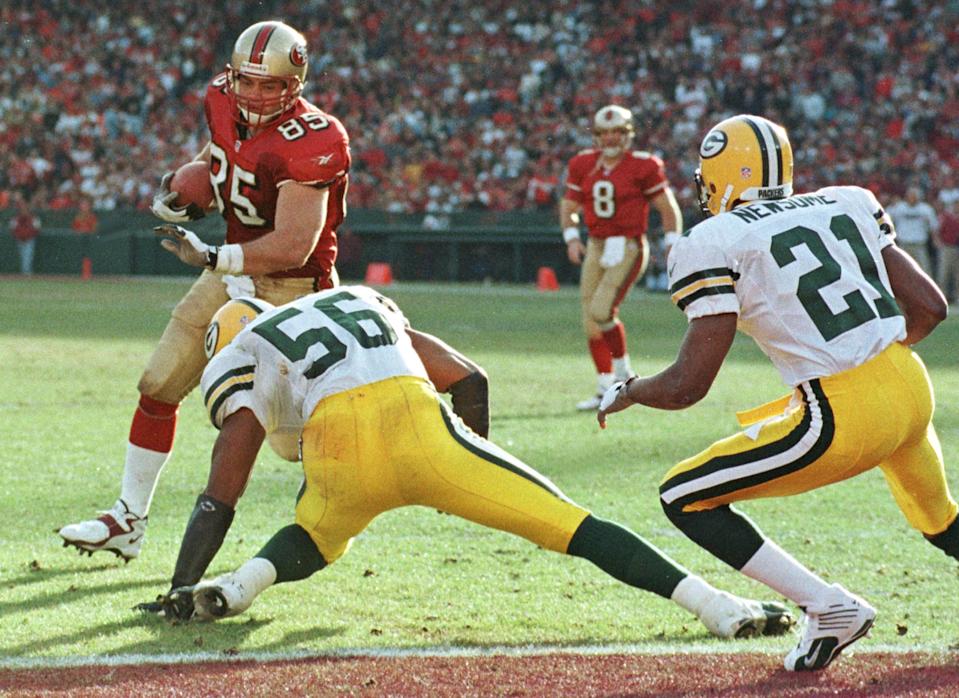
Editor’s Note: Anyone struggling with thoughts of suicide can call the National Suicide Prevention Lifeline at 1-800-273-8255.
A neurosurgeon recently confirmed what Greg Clark’s family long suspected.
The former San Francisco 49ers tight end was suffering from chronic traumatic encephalopathy prior to taking his own life last year. Clark died of a self-inflicted gunshot wound at 49 years old in July 2021. At the time, his family released a statement that he had battled CTE symptoms prior to his death.
Boston University researchers who have since examined Clark’s brain confirmed to the San Jose Mercury News and USA Today in stories published on Friday that he indeed suffered from Stage 3 CTE.
“CTE is a progressive disease and it gets worse as an individual ages,” Dr. Ann McKee told the Mercury News. “Even though Greg retired before age 30, the disease continued to progress and it spread from those lesions, which is very classic for CTE. His disease had spread into the interior of brain, the parts that control learning and memory.”
Steve Young: ‘We’ve got to be better’
Hall of Fame quarterback Steve Young played his final three NFL seasons with Clark on the 49ers from 1997-99. Head trauma also took its toll on Young, who suffered repeated concussions throughout his NFL career. Fear of permanent brain damage played a role in his decision to retire after the 1999 season. He didn’t play again after being knocked unconscious on a sack in a Week 3 game against the Arizona Cardinals.
He told USA Today on Friday that “we’ve got to be better” helping former players cope with brain trauma.
“It’s painful to think about people suffering silently,’’ Young said. “We’ve got to be better. We’ve got to figure it out. It’s on a lot of people’s minds, a lot of players minds, how to create an environment where people can share vulnerabilities and fears that probably wouldn’t ever be shared anywhere else.”
While Young called for better treatment of former players suffering from CTE, he stopped short of criticizing football for its role in causing it in the first place.
“I think people should be over trying to attack football,’’ Young told USA Today.
Per the Mayo Clinic, CTE is a degenerative brain disorder associated with depression, memory loss, cognitive impairment and behavioral changes including increased aggression. It is believed to be caused by repeated head trauma frequently seen among football players. It can only be diagnosed via a post-mortem examination of the brain.
CTE’s been diagnosed in multiple former NFL players who died by suicide, including former San Diego Chargers great Junior Seau. Former New England Patriots tight end Aaron Hernandez was diagnosed with Stage 3 CTE post-mortem in 2017. Hernandez took his own life in a prison cell in 2017 while serving a life sentence for the murder of Odin Lloyd.
McKee, the director of the CTE Center at BU, also confirmed Hernandez’s diagnosis.
